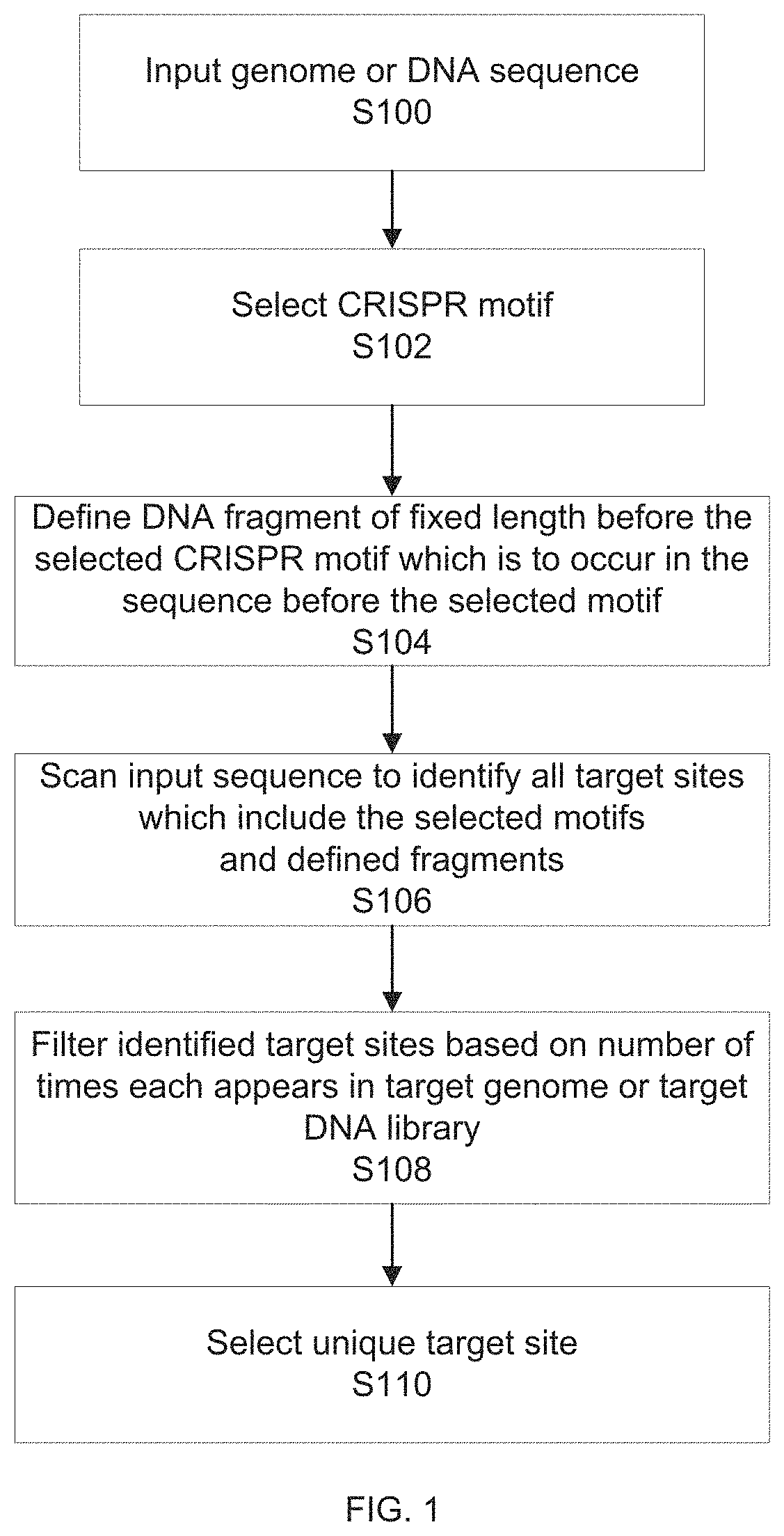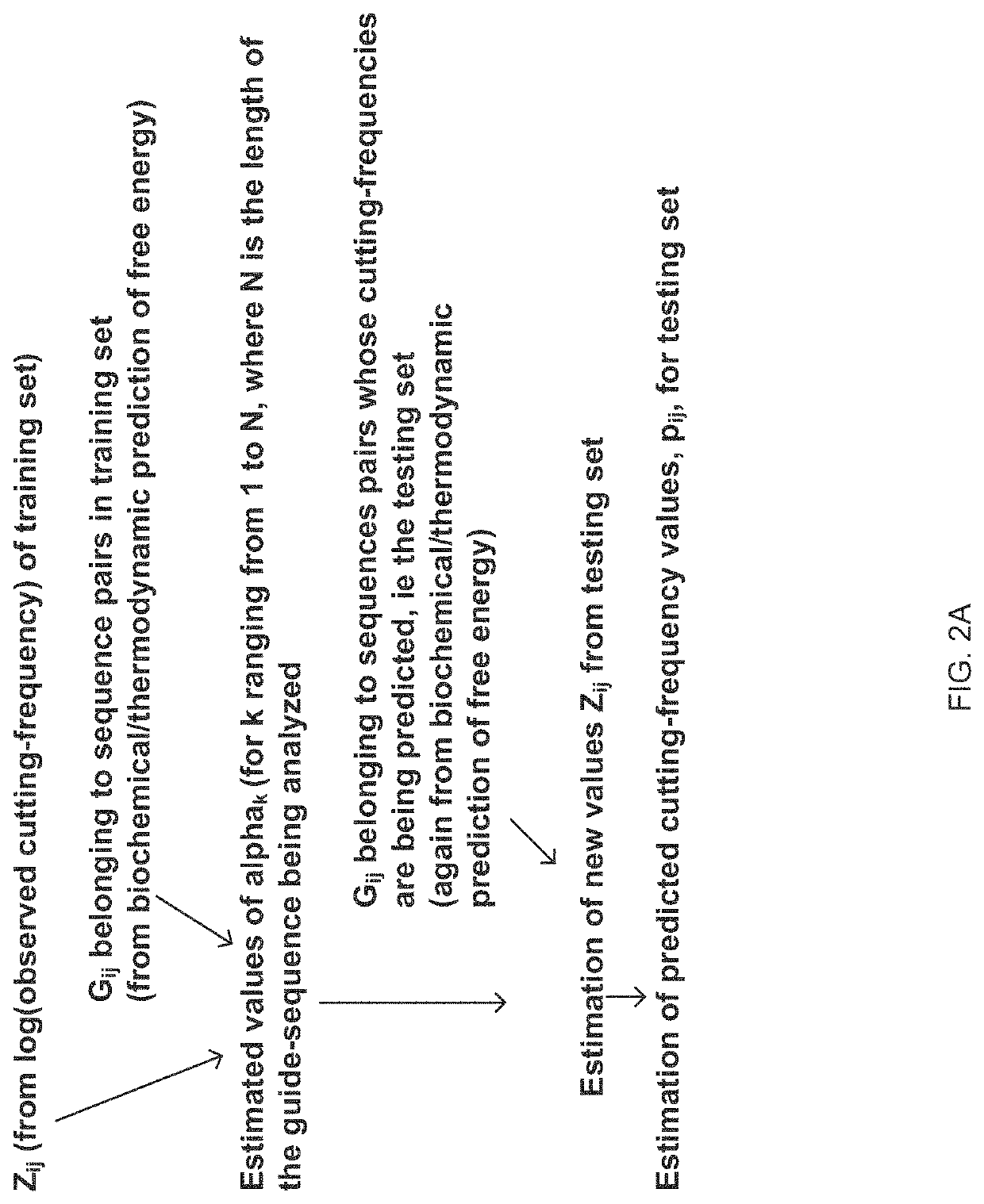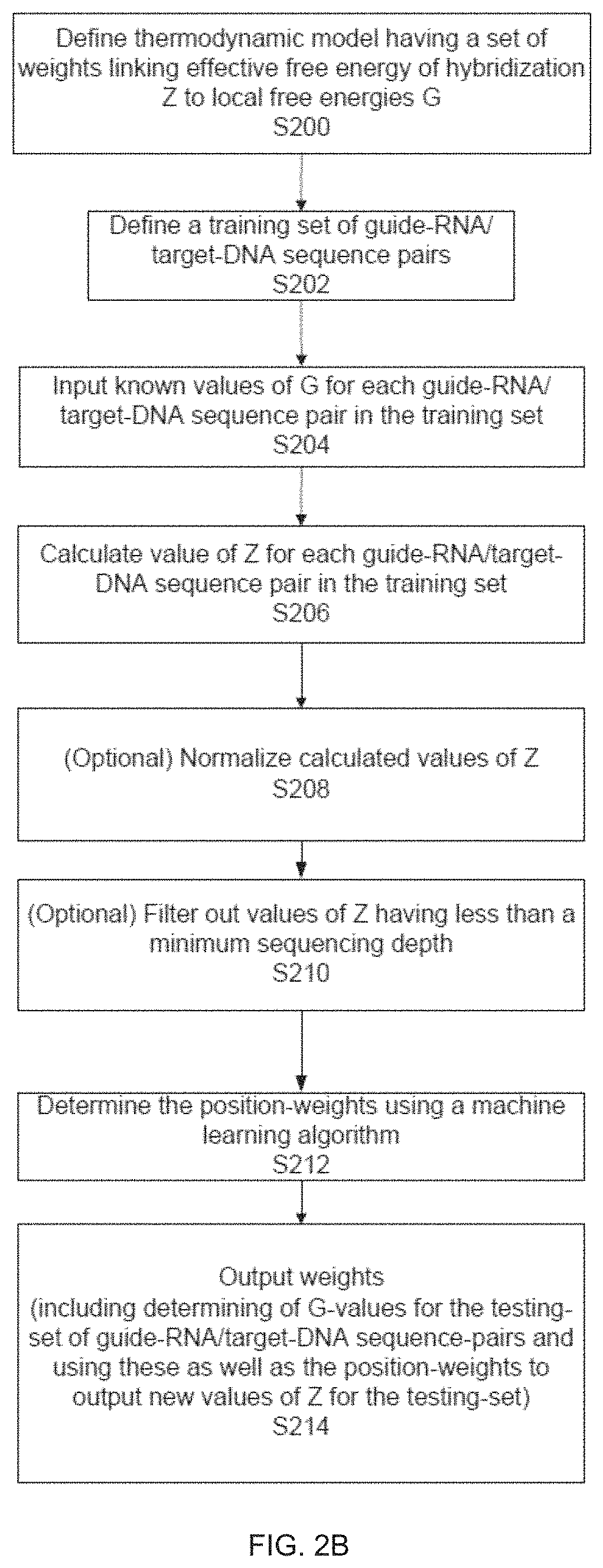Unbiased identification of double-strand breaks and genomic rearrangement by genome-wide insert capture sequencing
a genome-wide insert and unbiased technology, applied in the direction of biochemistry apparatus and processes, viruses/bacteriophages, enzyme stabilisation, etc., can solve the problems of potential oncogenic chromosomal deletion, amplification, translocation, etc., to avoid bias, minimize influence, and improve target specificity
- Summary
- Abstract
- Description
- Claims
- Application Information
AI Technical Summary
Benefits of technology
Problems solved by technology
Method used
Image
Examples
example 1
for Design 1.0 Insert
[0475]Reagent Setup
[0476]D10 Media
[0477]To prepare D10 media, dissolve 50 mL of fetal bovine serum (1×) and 5.5 mL of Penicillin-Streptomycin (10,000 U / mL) in 500 mL Dulbecco's Modified Eagle Medium (1×). Filtrate the media by using a 0.5 μm filter. Store for several months at 4° C.
[0478]PBS-BSA Solution
[0479]To prepare 1 L of PBS-0.1% BSA solution, dissolve 1 g of BSA in 1 L of PBS. Store at room temperature (25° C.) for up to 1 year.
[0480]6M LiCl Solution
[0481]To prepare 6M LiCl solution, dissolve 12.72 g of LiCl in 0.5 mL 1M Tris-HCl (pH 7.5) and 0.1 mL 0.5M EDTA (pH 8.0) and adjust the volume with water to 50 mL. Filtrate the solution by using a 0.5 μm filter. Store for several months at room temperature.
[0482]3M LiCl Solution
[0483]To prepare 3M LiCl solution, dilute 6M LiCl solution 1:2 in 0.5 mL 1M Tris-HCl (pH 7.5) and 0.1 mL 0.5M EDTA (pH 8.0).
[0484]Insert Production (Annealing of Bottom-Strand 5′ Oligo)
[0485]Prepare second PNK anneal reaction as follows...
example 2
of DSBs
[0614]In cells subject to genome editing, a DSB is induced at a target site in the cells DNA. Unintended DSBs may can also occur, for example, due to editing activity at off-target sites, and by other “background” mechanisms unrelated to genome editing. In evaluating specificity of genome editing processes, it is useful to distinguish DSBs at off-target sites from other background events.
[0615]To investigate genome-wide cleavage activity a data analysis pipline was developed, initially for use with BLESS (direct in situ breaks labelling, enrichment on streptavidin and next-generation sequencing). BLESS was applied to capture a snapshot of Cas9-induced DNA double-stranded breaks (DSBs) in cells. 293FT cells were transfected with SaCas9 or SpCas9 and EMX1 targeting guides, or pUC19 as a negative control. After cells were fixed, free genomic DNA ends from DSBs were captured using biotinylated adaptors and analysed by deep sequencing. With BLESS sequence reads and alignments to t...
example 3
hods
[0619]A scheme of the BLISS method is shown in FIG. 16. Cells were first fixed onto microscope slides or microscope coverslips. Adherent cells can be directly grown onto coverslips or treated (e.g., Poly D lysine or Geltrex coated) cell culture media, while suspension cells are spotted onto adhesive slides or pre-coated coverslips (e.g. using poly-L-lysine or similar adhesion matrices). If needed, adherent cells can be first trypsinized and then spotted in desired amounts similarly to suspension cells. Cell fixation was performed using a cross-linking agent (typically, methanol-free paraformaldehyde) directly onto the microscope slide / coverslip for a short period of time (typically, <30 min at 20-25° C.). Slides / coverslips with fixed cells can be stored for several months in a suitable buffer solution at +4° C. (typically, Phosphate Buffer Saline with sodium azide to prevent bacterial growth). Samples in this format can also be conveniently shipped at +4° C. For slides, cells ar...
PUM
| Property | Measurement | Unit |
|---|---|---|
| time | aaaaa | aaaaa |
| time | aaaaa | aaaaa |
| genomic stability | aaaaa | aaaaa |
Abstract
Description
Claims
Application Information
 Login to View More
Login to View More - R&D
- Intellectual Property
- Life Sciences
- Materials
- Tech Scout
- Unparalleled Data Quality
- Higher Quality Content
- 60% Fewer Hallucinations
Browse by: Latest US Patents, China's latest patents, Technical Efficacy Thesaurus, Application Domain, Technology Topic, Popular Technical Reports.
© 2025 PatSnap. All rights reserved.Legal|Privacy policy|Modern Slavery Act Transparency Statement|Sitemap|About US| Contact US: help@patsnap.com



